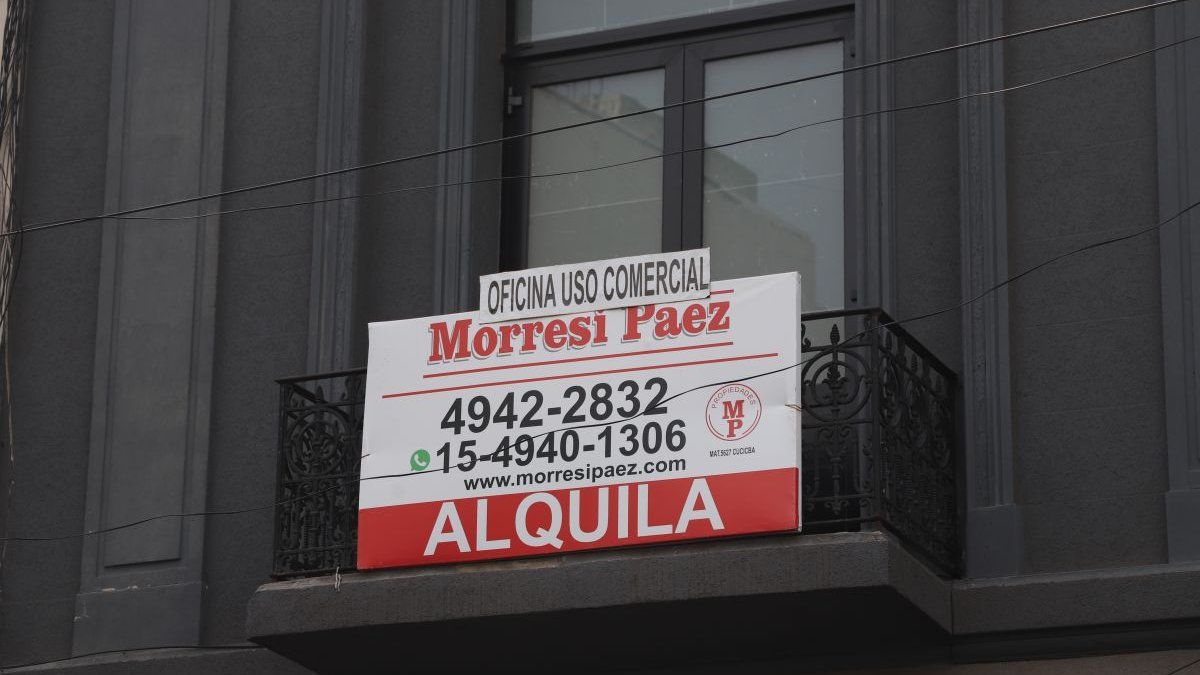Another fact that emerges from the survey is that of the total number of rental units, the proportion of used homes was significantly reduced, which came to represent the 87.6% of the total. From the Ministry of Finance and Finance of CABA they indicated that brand new units increased their participation by 10%.
In parallel, increases were registered that doubled the figures of the previous year: in the case of studios, increases reach 103%while for two-room apartments they amount to a 95.2% year-on-year increase.
These indicators partly explain the difficulties accessing housing who live in several cities of the country.
From Grouped Tenants, Gervasio Munoz, clarified to Ambit that the difficulties of access to housing cover more than half of the population of Buenos Aires: “It could be said that there are 65% who have difficulties accessing housing”.
At this juncture, there is a multiplicity of variables that add to the housing deficit that the City of Buenos Aires is going through but also many other cities in the country.
Inflation, the loss of purchasing power of wages and the rental law are two of the elements generally indicated when detailing the difficulties of access to housing.
According to a report by the consultancy PxQ, the weight of the rent in the private salary grew again from July 2022. Considering the CABA average, rent represents 48% of an average salaryabove what it represented in the period 2012-2015 (41%) and between 2016 and 2019 (42%).
However, Buenos Aires legislators and tenant organizations bring to the discussion the irruption of a new actor: temporary rental platforms.
From Grouped Tenants they disseminated this week the expansion of temporary rentals, especially in the corridor that covers the richest areas of the city.
Since September 2022, after the enactment of Law 6,625, it is mandatory to register the homes available for temporary rental. However, to date, there are 400 homes registered out of an estimated total of more than 20,000 homes offered on platforms for that purpose. Among them are more than 17,000 complete homes, 1,996 rooms and 106 hotel rooms. They also add that in the last 3 months the offer increased by 19%.
The Buenos Aires legislator Manuel Socías stood out in dialogue with Ambit that it is not a problem of the norm itself, but rather points out that the difficulty is that “no sanctions are foreseen” for those who do not register the property or for the platforms that offer them despite not being registered.
According to Socías, the problem of the housing deficit is partly rooted in that the private real estate sector builds to satisfy the demand for dollars, and not the demand for housing. And part of the explanation for this is that there were few vehicles left in the economy to access dollars. In addition, it is estimated that in the city of Buenos Aires there are about 200,000 idle homes.
“The week of the soybean dollar saw a boom in apartment sales. Sectors that have excess pesos become dollars with the purchase of apartments,” Socías said this week in a radio interview.
The need to review the distribution of housing is due to the rental demand flow: “The rate of renters today is 20% And that has been growing very rapidly in recent years, in a deregulated and informal rental market. There is very little registration of rental contracts in Argentina,” said Socías.
The legislator remarked that what is happening in Buenos Aires is that there is a progressive and accelerated increase in temporary tourist rentals and the supply of properties from the permanent residential rental market is withdrawn and turns to temporary tourism.
The problem is profitability
“That has two problems, that the permanent offer is withdrawn for a very basic reason, which is that The average annual profitability of a temporary tourist rental is between three and four times greater than the profitability of a permanent residential rental..
The problem of profitability has already been alerted. According to the consultancy PxQ, lThe drop in traditional rental yields drives the search for a better rate of profitIf we add that due to the exchange rate, Argentina is very cheap for foreign tourists, the offer seeks that market.
“If the annual yield of a traditional rental and different temporary rental alternatives are compared based on the current value of the properties in Recoleta and Almagro, the convenience of one business alternative over the other is evident”, adds the report.
Measured at the exchange rate counted with settlement, The profitability of renting a two-room apartment is 2.6% per year. Before 2018 it stood at 5% and in 2006, at 9%.
Now if we look at the annual yield of a rental in the Buenos Aires neighborhood of Recoleta for 10 days it is 4%, it rises even more if it is rented for 15 days and it is located at 6% and for the rent for 20 days it is estimated that it is 8.1%.
In the case of the neighborhood of almagrothe traditional rental yield is 2.6% per year, but for temporary rentals for 10, 15 and 20 days, the annual yield amounts to 3.6%, 5.4% and 7.2% respectively.
“The total square meters for traditional rent in CABA is at historic lows. This phenomenon is related to the low performance that it generates for the owner, as previously analyzed”, they conclude in the report.
“There is a very strong incentive problem,” Socías says.
Another problem highlighted by the legislator that emerges from the growth of temporary rental is the dollarization of the rental market: “The reference of the rental market in general begins to be fixed in dollars. So now it is common to see permanent rental offers in dollars. Of course it also has to do with inflation.
Socías points out that the problem of temporary rental is not local. “At a global level, what is happening is a debate everywhere on the subject, in Europe, the United States, Mexico, Colombia. What is being done is not working.
The legislator points out that the first challenge is registration and argues that “some cities restrict the number of days that properties can be available on the platforms, some are prohibiting the existence of multi-ownersthat is, investors who jointly buy properties to put them directly on the temporary rental market”.
What are the possible solutions?
For Socías, there are two options: “One prohibitionistwhich is to go out and fight Airbnb, and the other is work on the permanent residential rental market to restore profitability. There you have to work on the owner’s cost structure, which are municipal fees, national taxes, and income taxes or other taxes. I believe that the possibility must be explored that those properties that return and formalize the rentals and respect the price reference system to gradually lower the inertia, could be offered some benefits in reference to the payment of personal assets or profits”.
“The other is to work with a scheme of subsidize demandhelp tenants pay rental fees or subsidize the offer, that the state pay the owner a kind of thirteenth installment ”.
Another option that he sees as possible is to think of a subsidized rate credit for the income of the tenants and another for the owner, for the enhancement of the property once the contract is finished.
rental law
Contrary to the usual critics, Socías does not see that the problem is motivated by the Rental Law: “The Rental Law is like aloe vera, new consequences are attached to it every day. I don’t think there is such a direct causality in terms of the effect between the law and that. Yes, it was the product of a tremendous campaign against the Law due to the retraction of the rental market. What I think happened as a result of this campaign was a phenomenon of the expectations of the owners to remove the properties because ‘the law is very bad.’ The law has problems but it is not a bad lawFirstly, because it brought into the public debate the need to think about the issue of rents as a problem and listed three or four situations that are fine. That the rents are registered, he put an update coefficient that is fine, that accompanies inflation, but does not allow them to disband.
However, he points out that the law has a problem “of focus. You have to work more on the incentive side than on the punitive side”.
“You have to reorient public housing policy to the production of a stock of public rental housing, introduce houses that serve as witness price to harmonize the prices of the rental market”.
“The housing problem is solved on the supply sidelike who for whom it is built”, he concluded.
Source: Ambito




